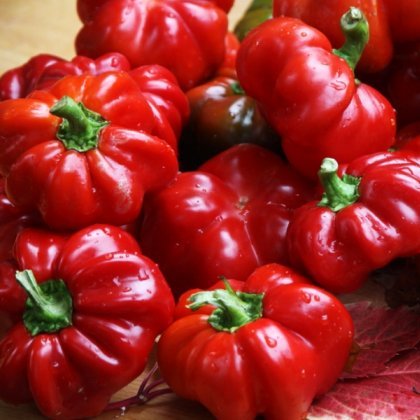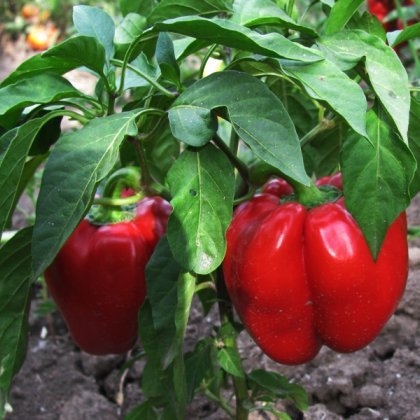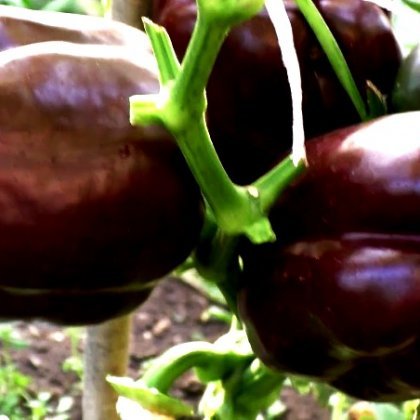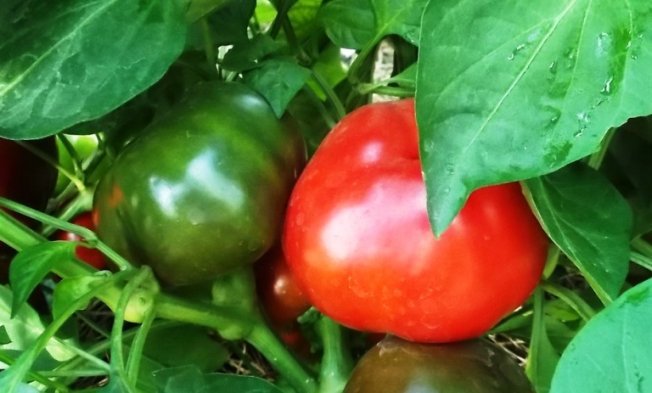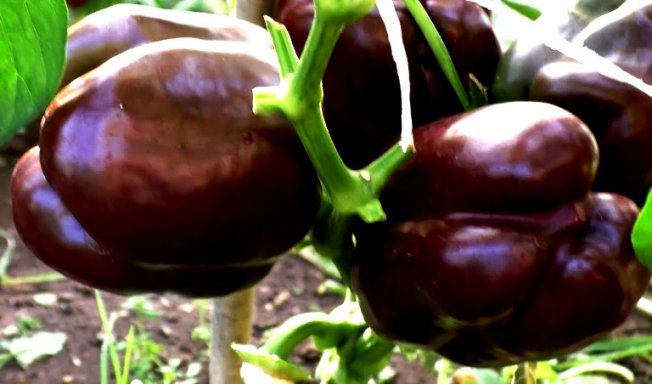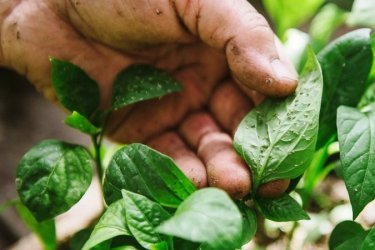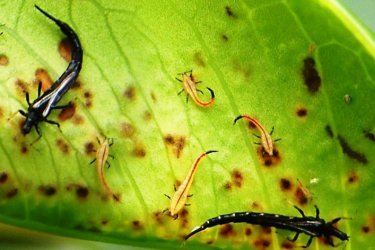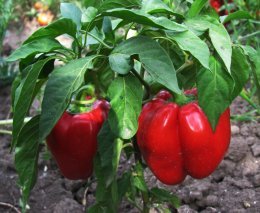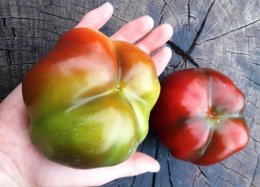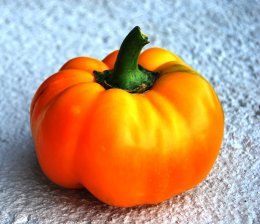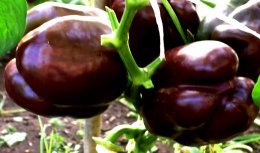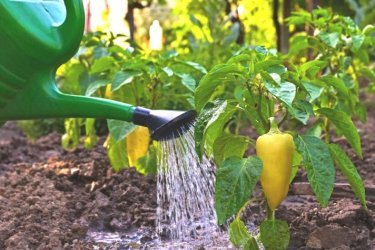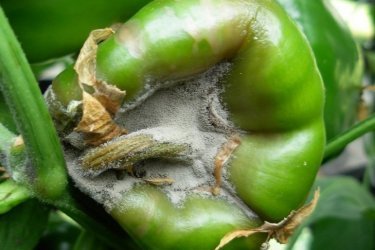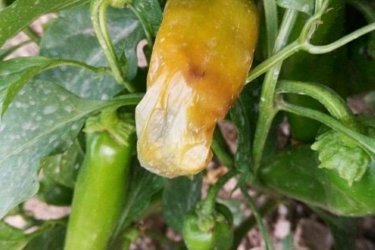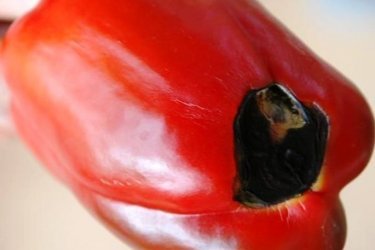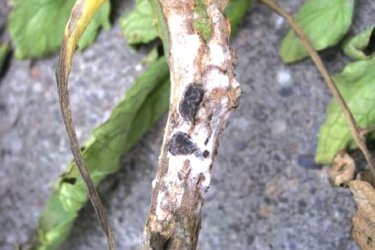Gogoshar - high-yielding pepper varieties with thick-walled fruits
Gogoshar
cultivar Gogoscharii
capsicum
Mid-early
Features Vegetable pepper
Vegetable pepper resistance to diseases

The Gogoshar pepper variety, or rather a group of varieties, was bred by Moldovan breeders from the Research Institute of Vegetable Growing. The most common of the zoned ones are: Merishor, Rubinovy 2 and Gogoshar Local.
Representatives of the variety have slight differences in the shape and size of the fruit, taste and resistance to common diseases.
Gogoshar pepper is very popular among vegetable growers in Moldova and Southwestern Ukraine. They call him Ratunda or Ratun.
We recommend that you familiarize yourself with the table and find out the characteristics of the pepper varieties, which are united under the common name Gogoshar.
| Variety name | Peculiarities | Fruit wall thickness, mm | Fruit weight in g |
| Novogoshary | Disease resistance, intensive fruiting, suitability for long-term storage and transportation | 8-10 | 140 |
| Peninsular | Spicy taste, thick-walled, juicy | 8-9 | 90-130 |
| Sweet | Without bitterness, red, with a pronounced aroma | 10 | 150 |
| Sweet yellow | Lemon color, with a pronounced aroma and high taste, low-growing bush | 8-9 | 150 |
| Mini | Low-growing, standard, abundantly fruiting, semi-sharp, yellow or red, can be grown indoors | 1-2 | 10-20 |
| Ruby | Cold-resistant, thick-walled, ripe peppers are dark cherry in color, resistant to Verticillium wilt | 7-8 | 110-150 |
| Yellow sun | Ripe fruits of bright yellow, sunny color, thin-walled, good taste | 3-4 | 70-100 |
| Zedek | Mid-season, thick-walled, with pronounced ribbing, sweet | 8-10 | 100-150 |
| Ratunda red | Early ripening, tall (up to 70 cm), pumpkin-shaped fruits, sweet and juicy | 10 | 100 |
| Ratunda gold | Mid-season, medium-sized (up to 55 cm), fragrant, golden-yellow color, productive, large-fruited | 10 | up to 350 |
All varieties are united by an original spherical, flattened shape, with pronounced ribbing.
Pepper variety Gogoshary: characteristics and description of the plant
Refers to mid-season. The plant is low, squat, standard. The height does not exceed 50 cm, the crown diameter is about 45 cm. The leaves are bright, dark green. The shape of the leaves is round, the tips are pointed.
The small dimensions of the plants allow them to be grown both in open ground and in film tunnels and greenhouses.
Description of fruits
The shape is flattened, round, the peppers resemble small pumpkins or balls. The size of the peppers is average, the weight ranges from 50 to 130 g. The shape is ribbed, four-chambered. Refers to thick-walled, wall thickness more than 7 mm.
The color, depending on the variety, can be different: green or purple, red or yellow, orange or burgundy and even black. The peduncle is strong, which allows most fruits to grow upward.
The dense and juicy flesh of the peppers has a bright aroma and a pronounced sweet taste; no bitterness is felt.
Productivity and ripening time
The productivity of Gogoshar is high. Fruits that reach technical maturity have a green color; in a biological state, they acquire different shades of red, from scarlet to ruby, or golden yellow.
The ripening time for different varieties differs slightly, but in most they correspond to mid-ripening. To obtain fruits, it will take approximately three and a half months from the date of sowing the seeds in the ground, from the moment of emergence of seedlings - approximately 110-115 days. Mass ripening of fruits occurs in July, active fruiting continues in August.
Advantages of the variety
Among the positive characteristics you should definitely take into account:
- productivity;
- thick-walled, fleshy fruits;
- Possibility of long-term storage;
- ability to transport over long distances;
- ripening when picked;
- relative resistance to common viral and bacterial diseases;
- high content of microelements and vitamins with low calorie content of the product.
Flaws
The most serious disadvantages that vegetable growers face are:
- requires watering, does not tolerate dry periods;
- with excessive moisture and poor ventilation of the beds, there is a risk of being affected by common diseases and pests;
- requires careful handling of stems, because they are brittle.
Where is it recommended to grow
All varieties of this variety are heat-loving, so you can count on abundant fruiting if Gogoshar is planted in the southern regions of Russia, Ukraine and Moldova.
The optimal average temperature in summer should be from +25 to +29 C. With sufficient sunlight and fresh air, fruits actively form and their taste improves.
Gogoshars can also be grown in greenhouses; provided normal conditions are created, the yield will also be high.
Seedling care
Sweet peppers are usually grown using seedlings. Proper care of seedlings allows you to obtain strong, healthy plants capable of actively bearing fruit.
Caring for seedlings includes standard activities:
- loosening the soil;
- watering and fertilizing;
- dive;
- maintaining temperature and light conditions.
Watering is carried out with warm, settled water, provided that the top layer of soil dries out.After watering, the soil is loosened, but very carefully so as not to damage the not yet strong root system. They begin to loosen the soil only after the sprouts rise 2-2.5 cm above its level.
The best time for diving is after the third true leaf appears on the plants.
The procedure is important because allows the plant to form a strong root system.
Replant carefully, avoiding damage to sensitive roots.
The first feeding of seedlings is carried out two weeks after the sprouts appear. You can apply liquid complex fertilizers, making sure to follow the instructions for their dosage and timing of application.
The optimal temperature for germinating pepper seeds is +25 + 26 C; to grow seedlings, you will need to maintain a temperature of about + 22 C; lower the temperature gradually. A couple of weeks before planting in the ground, they begin to harden the seedlings, for which the containers with seedlings are taken out into the air for a couple of hours every day. Containers with plants should not be exposed to direct sunlight.
Rules for planting Gogoshary peppers in beds
It is advisable to grow Gogoshar at a distance from other varieties of bell and bitter peppers: pollination of the crop can cause the fruits to lose their characteristic appearance and taste.
For the garden bed, you should choose a place protected from drafts and northern winds, illuminated by the sun.
The best predecessors of pepper are: onions and carrots, beets and cucumbers. It is not recommended to plant peppers in those beds where tomatoes and potatoes grew last season, because... plants are affected by the same diseases, the pathogens of which persist in the soil for several seasons.
The ideal soil for growing peppers is loam with humus; it should be light and permeable to water.
Features of care
The key to a good harvest is following the rules of care:
- Watering should be done regularly, with water heated in the sun, not allowing the soil to dry out; to increase air humidity, it is advisable to water the row spacing;
- loosening the soil must be done carefully, avoiding damage to the horse system;
- The soil should be mulched with sawdust, straw, dried grass, the mulch layer should be at least 2-3 cm;
- When weeding, you should remove all weeds from the garden bed; those that grow near the stem should be pulled out carefully so as not to damage the roots of the peppers.
Plants are fed in three stages:
- 10 days after transplanting into the ground;
- during flowering;
- during the period of ovary formation.
An adult plant requires nitrogen, phosphorus and complex fertilizers; they should be dosed strictly according to the instructions.
Large fruits create a considerable load on the bushes, so the plants should be tied up.
When harvesting, you must hold the stalk, otherwise you can damage the fragile branches, or even the entire bush. It is recommended to harvest the first crop in a state of technical maturity, this prolongs the fruiting period.
Diseases and pests: preventive measures
Under certain climatic conditions, plants become vulnerable to putrefactive and fungal diseases; they can also be attacked by pests such as the Colorado potato beetle, aphids, and slugs. This slows down the development of plants or leads to their death.
As a preventive measure it is recommended:
- carefully remove plant debris from the site before digging it up;
- treat seeds before sowing;
- periodically dust the plants with chalk or ash powder.
If necessary, treat with insecticides at intervals of 3 weeks. Oxychom and Bordeaux mixture are used to treat fungal diseases. Affected leaves and fruits are removed and burned.
In small beds, beetles and slugs can be collected by hand, and pest eggs can also be destroyed.
Taste qualities, how it is used in cooking
The taste qualities, pleasant aroma and attractive appearance of thick-walled fruits allow them to be used for:
- fresh consumption in salads;
- preparing first and second courses, as well as for decorating them;
- canning;
- freezing and drying;
- preparation of ketchups, sauces, adjika.
Pests




